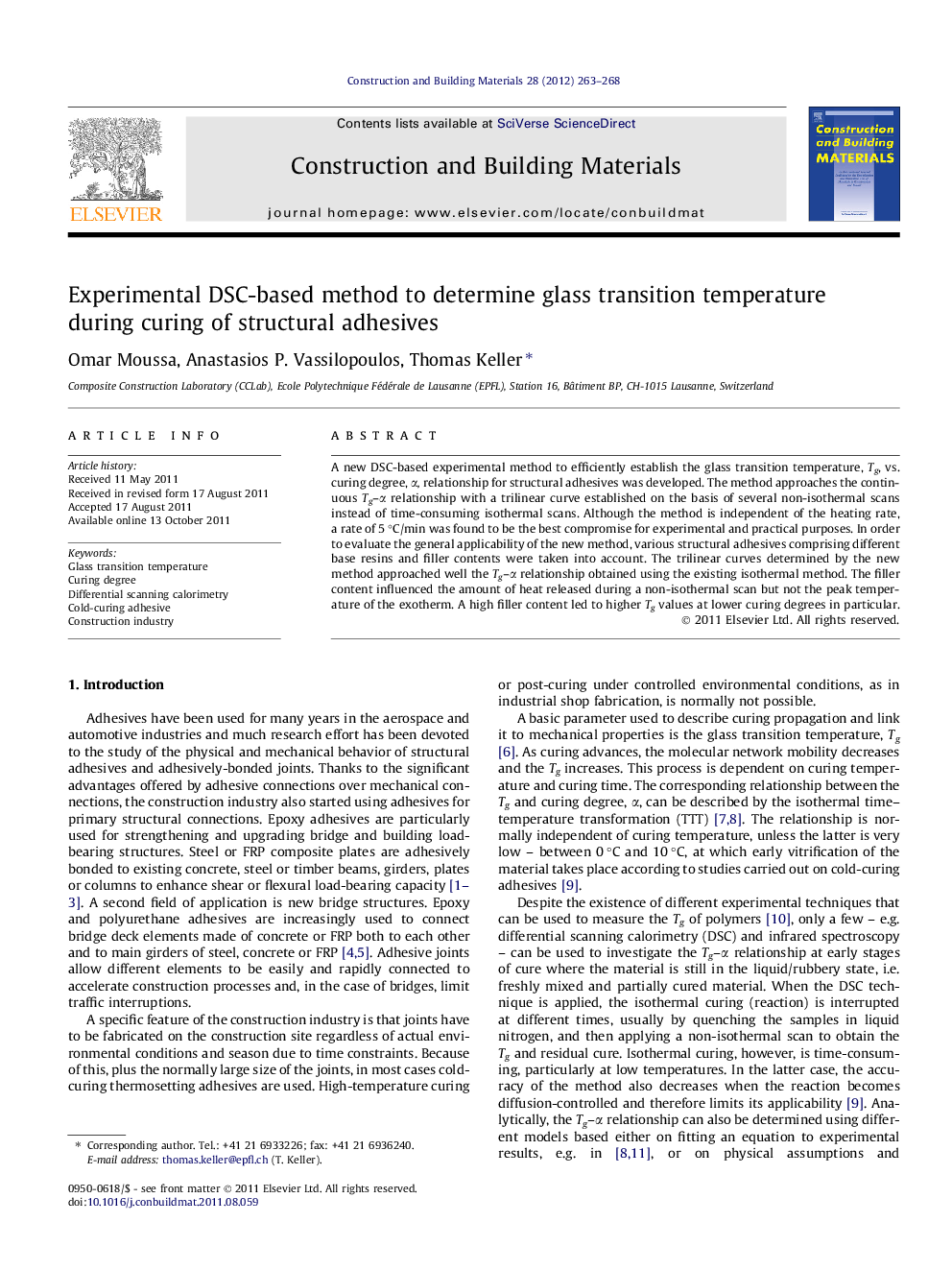| Article ID | Journal | Published Year | Pages | File Type |
|---|---|---|---|---|
| 259572 | Construction and Building Materials | 2012 | 6 Pages |
A new DSC-based experimental method to efficiently establish the glass transition temperature, Tg, vs. curing degree, α, relationship for structural adhesives was developed. The method approaches the continuous Tg–α relationship with a trilinear curve established on the basis of several non-isothermal scans instead of time-consuming isothermal scans. Although the method is independent of the heating rate, a rate of 5 °C/min was found to be the best compromise for experimental and practical purposes. In order to evaluate the general applicability of the new method, various structural adhesives comprising different base resins and filler contents were taken into account. The trilinear curves determined by the new method approached well the Tg–α relationship obtained using the existing isothermal method. The filler content influenced the amount of heat released during a non-isothermal scan but not the peak temperature of the exotherm. A high filler content led to higher Tg values at lower curing degrees in particular.
► A new DSC-based method to establish the Tg–α relationship was developed. ► The method approaches the continuous Tg–α relationship by a trilinear curve. ► The method proved a general applicability as 5 different adhesives were considered. ► The influence of filler content was also investigated for different adhesives.
